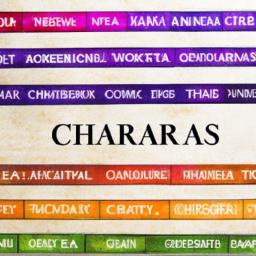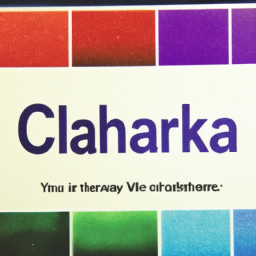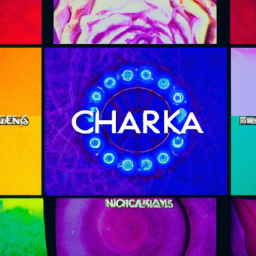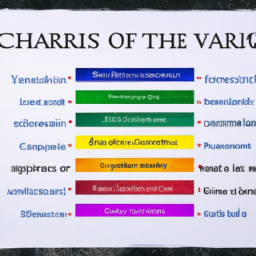What Are Chakras and How Does Religion Play a Role?
Chakras, also known as the wheels of energy, have been a fundamental concept in many Eastern spiritual traditions such as Hinduism, Buddhism, and Taoism. These energy centers are believed to exist within our bodies and influence our physical, emotional, and spiritual well-being. But where does religion fit into this concept of chakras?
Religion and spirituality go hand in hand, with many religious practices having a strong focus on spiritual growth and self-awareness. Chakras, on the other hand, are associated with the idea of balancing and aligning one’s energy. So, naturally, there is a strong connection between the two.
Let’s take a deeper look into what chakras are and how religion plays a role in their understanding and practice.
The Seven Chakras and Their Meanings
According to traditional Hindu and yogic beliefs, there are seven chakras located along the spine, starting from the base and going up to the crown of the head. Each chakra is represented by a different color and has various meanings associated with it:
1. Root Chakra (Muladhara) - located at the base of the spine and symbolized by the color red, this chakra is associated with feelings of safety, security, and stability.
2. Sacral Chakra (Svadhisthana) – located just below the belly button and represented by the color orange, this chakra is associated with sexuality, creativity, and emotional well-being.
3. Solar Plexus Chakra (Manipura) - located above the navel and symbolized by the color yellow, this chakra is linked to self-confidence, personal power, and motivation.
4. Heart Chakra (Anahata) – located in the center of the chest and represented by the color green, this chakra is associated with love, compassion, and acceptance.
5. Throat Chakra (Vishuddha) – located in the throat area and symbolized by the color blue, this chakra governs communication, self-expression, and speaking one’s truth.
6. Third Eye Chakra (Ajna) – located between the eyebrows and represented by the color indigo, this chakra is associated with intuition, perception, and spiritual awareness.
7. Crown Chakra (Sahasrara) – located at the top of the head and symbolized by the color purple, this chakra is linked to universal consciousness, spiritual connection, and enlightenment.
The Role of Religion in Chakras
All the major religions, whether Hinduism, Buddhism, Christianity, or Islam, have their own unique understanding and practice of chakras. Each religion has its own set of beliefs and rituals associated with chakras, but the underlying principle remains the same – the balance and alignment of one’s energy.
In Hinduism, chakras are believed to be centers of spiritual energy connected to different deities or Hindu gods. The goal is to purify and activate these chakras through meditation, mantras, and other spiritual practices to achieve a higher state of consciousness and union with the divine.
In Buddhism, chakras are seen as energy centers that need to be balanced and cleared for one to attain inner peace and enlightenment. The Dalai Lama himself has spoken about the importance of chakras and their role in achieving a mind-body-spirit connection.
In Christianity, chakras are not specifically mentioned, but the concept of balancing one’s energy can be seen in the teachings of Jesus. For example, the Sermon on the Mount talks about the importance of purity of heart and mind, which can be associated with the heart and third eye chakras.
In Islam, chakras are not a traditional concept, but the practice of spiritual purification through prayer, charity, and fasting can be seen as a way to balance and align one’s energy.
The Benefits of Understanding Chakras from a Religious Perspective
The study and practice of chakras from a religious perspective can offer many benefits. Here are a few of them:
– Deepening one’s spiritual connection: By understanding chakras and their role in our spiritual well-being, we can deepen our connection with our higher power and gain a deeper understanding of our spiritual nature.
– Healing and self-awareness: The study of chakras can help us identify any imbalances or blockages in our energy centers and provide techniques to heal and balance them. By working on our chakras, we can also gain a deeper understanding of ourselves and our emotions.
– Strengthening religious beliefs: By incorporating chakra practices into our religious routine, we can strengthen our spiritual practice and connect more deeply with the teachings of our religion.
Conclusion
Chakras are a central concept in many spiritual traditions, including Hinduism, Buddhism, and Taoism. Understanding chakras from a religious perspective not only helps us achieve balance and alignment in our energy centers but also deepens our spiritual connection and strengthens our religious beliefs. So let us embrace this ancient wisdom and incorporate it into our spiritual practice for a holistic and fulfilling way of life.





Interesting topic!
SamPrice: This is a great subject to explore, I’m looking forward to hearing what other people think. #Curious
Interesting insight from different perspectives—I’m looking forward to learning more about how different religions view chakras! #OpenToDiscussion